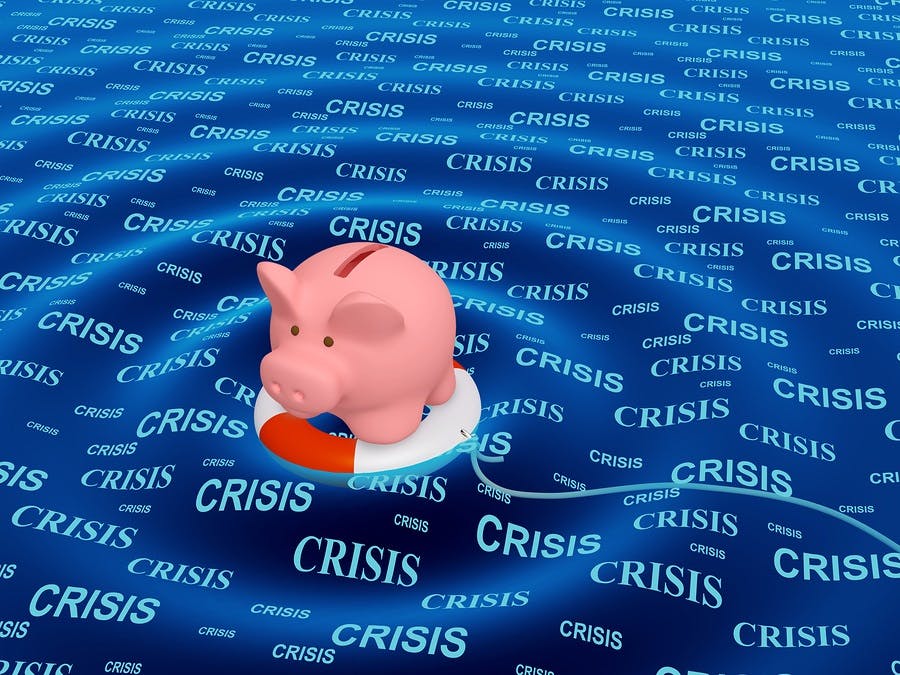Employer-sponsored short-term savings plans aren’t yet a standard work benefit in the way that health insurance and 401(k) accounts are. But it may be time for that to change, given today’s combination of historically low unemployment rates and high financial insecurity.
In this article I’ll outline how short-term savings plans work and how, by offering them as an employment benefit, employers can create and retain a more engaged and productive workforce.
Financial insecurity
As other contributors have mentioned here, offering financial wellness benefits can yield great rewards: higher engagement, higher productivity, and lower turnover, to start. And then there’s the loss-aversion angle: When you provide financial wellness benefits to employees, you prevent the absenteeism and presenteeism associated with high levels of financial insecurity and stress.
Further, using the experience of health wellness programs as a guide, employer-sponsored financial wellness programs could yield a return on investment of as much as 300%. The country’s largest companies have taken notice: The Wall Street Journal said 17% offered financial wellness benefits of some kind in 2016, including educational loan assistance, financial counseling, and general money management lessons.
The new kid on the block is the employer-sponsored short-term savings plan, which aims to help employees establish and maintain an emergency savings fund. And it’s arriving just in time: a 2018 PwC survey found that emergency savings is the top financial concern for millennial and Gen X workers, and it’s number two for baby boomers.
Financial shocks
Unlike 401(k) plans or student loan assistance, which help employees in specific financial situations, short-term savings plans aim to help employees build wealth for the great unknown – that is, for “financial shocks,” which 60% of households experience in any given year.
These financial shocks (including unexpected medical bills, car repairs, and home maintenance) cost a median of $2,000 each and make it difficult for families to build or restore their emergency savings, according to research by the Pew Charitable Trust.
Employer-sponsored short-term savings programs aim to provide employees with a financial cushion for when these shocks hit. In some ways, they work like retirement plans, by letting employees set aside a certain amount of money each month and letting employers match that amount or offer another financial contribution.
The main difference is that short-term savings accounts must be funded with after-tax dollars, as current law doesn’t allow tax exemption on these funds.
Models for short-term savings benefits
Employer-sponsored short-term savings plans are still fairly new, but already a few models have emerged:
- The retirement sidecar: This model, which involves setting up a short-term, after-tax savings account in addition to existing 401(k) infrastructure, is popular among larger companies with more robust benefits infrastructure. A bill currently in a Senate committee would make it easier for employers to set up such accounts, in part by letting employees make automatic contributions as they do for retirement accounts.
- Dedicated savings account: Another method that some smaller employers are adopting is simply having employees open a dedicated savings account and transfer money there each pay period. Many employers are incentivizing this behavior by matching some or all of their employees’ contributions (up to certain limits). Suntrust bank offers the additional incentive of $1,000 for any employee who sets up automated contributions.
- “Round-up” savings: Like Bank of America’s “Keep the Change” program, this style of short-term savings rounds every transaction from an employee’s debit card up to the nearest dollar and deposits the rounded amount into a dedicated savings account. The program created by CookieJar (where I work) lets employers match contributions and gives employees the option of contributing additional funds at the end of each month.
While the primary benefit of these accounts is a short-term emergency fund, they can also bolster long-term savings efforts by preventing employees from raiding their retirement funds when an emergency strikes (indeed, 44% of those who tap into retirement accounts early do so to pay down debts and bills).
This, in turn, helps cultivate an atmosphere of long-term financial security that can reduce stress-related productivity slumps and boost engagement.
As you contemplate adding a short-term savings benefit for your employees, consider this final number: fewer than half of all workers think their employers care about their financial well-being. And more than half of them say they’d likely be attracted by a company that cares more about their financial well-being.
Given the high cost of turnover and today’s low unemployment rate, that’s a clear call to action: make employee financial wellness a priority, and your bottom line will thank you.
